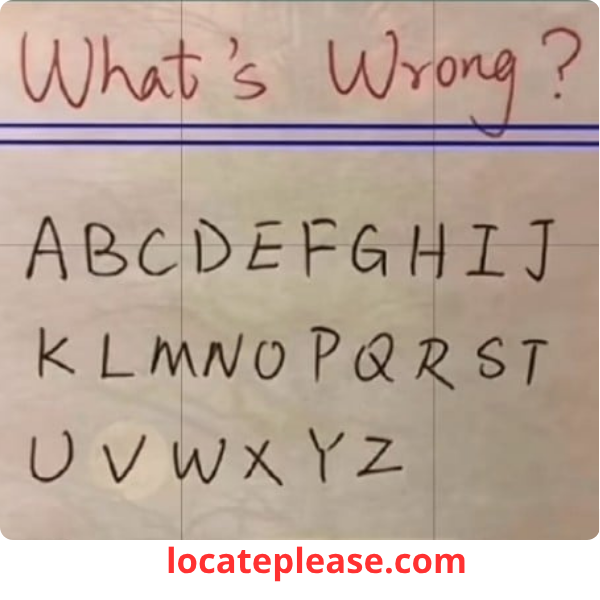At first glance, this puzzle seems deceptively simple. It presents what appears to be an ordinary sequence of the alphabet—a string of letters we’ve all seen countless times before. But don’t let its familiarity fool you. Something is subtly amiss in this otherwise mundane arrangement. The challenge? Spotting the anomaly hidden in plain sight.
Most people won’t notice the mistake immediately because our brains are wired to process familiar patterns quickly and efficiently. When you look at the ABCs, your mind doesn’t linger on each letter; instead, it skims over them as a cohesive whole. This automatic recognition makes spotting discrepancies incredibly difficult unless you slow down and pay close attention.
To truly uncover the error, try humming the Alphabet Song while examining the image. Yes, that childhood tune you haven’t thought about in years might just hold the key to solving the mystery. Why? Because the song anchors your focus on the correct order of the letters, forcing you to compare what you see with what you know should be there. And that’s when things start to get interesting.
The trickiest part lies in the middle section of the alphabet—the area where most of us feel confident in our memorized patterns. Our brains trust these sequences so completely that we rarely question their accuracy. In fact, this very confidence often blinds us to glaring errors right under our noses. It’s not an optical illusion or some elaborate ruse—it’s simply a clever play on human perception designed to exploit how our minds handle routine information.
But here’s the kicker: once you spot the mistake, it becomes impossible to unsee. Suddenly, the entire image transforms from something innocuous into a glaring example of how easily our brains can overlook even the simplest mistakes. You’ll find yourself staring at the screen, wondering how you missed something so obvious—and perhaps feeling a mix of frustration and awe at the ingenuity behind the puzzle.
So, why does this matter? Beyond being a fun brain teaser, puzzles like this one serve a greater purpose. They remind us of the importance of slowing down and paying attention to details, even when we think we already know the answer. These kinds of challenges sharpen our observation skills and encourage critical thinking by forcing us to question assumptions we take for granted. Whether you’re using it as a tool for personal growth or sharing it with friends and family to spark lively discussions, this type of puzzle has immense value.
And if you still haven’t spotted the issue yet, don’t worry—you’re not alone. Many people stare at the image for minutes (or even longer) before the “aha!” moment hits. That sudden realization is part of what makes these puzzles so satisfying. When the solution finally clicks, it feels like unlocking a secret code or solving a mystery.
Are you ready to test your powers of observation? Take another look at the image—but this time, approach it with fresh eyes. Break free from autopilot mode and scrutinize every detail. Who knows? You might discover something surprising about both the puzzle and yourself.
Because sometimes, the smallest anomalies hold the biggest revelations.










